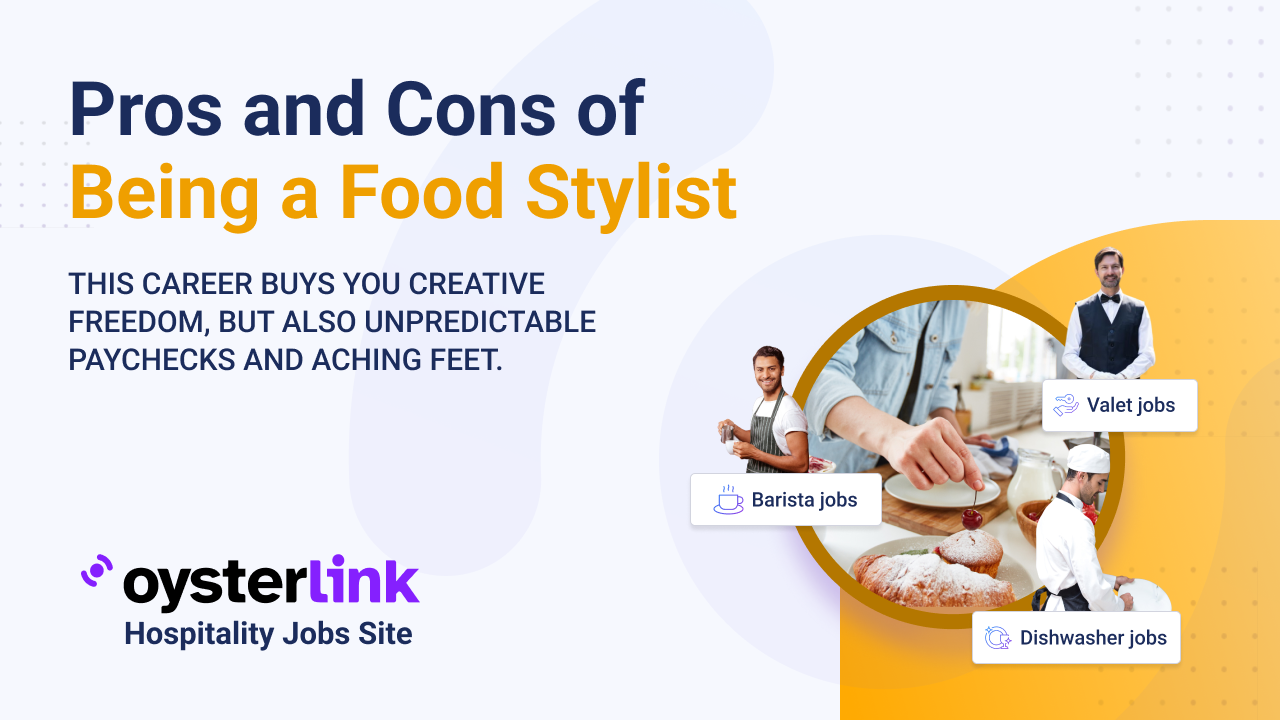Pros and Cons of Being a Food Stylist: Key Takeaways
- Experienced Food Stylists can earn up to $150,000 yearly.
- Food stylist salaries in the U.S. have grown steadily, increasing from about $23,000 in 2010 to $30,000+ by 2023.
- The food styling career is competitive, physically demanding, and highly technical.
In this guide, we’ll cover the pros and cons, real Food Stylist salary and what it takes to thrive in this creative, fast-paced career.
What Does a Food Stylist Chef Do?
Food Stylists make dishes look irresistible for advertising, cookbooks, TV, and photography.
They balance culinary skill with visual artistry, using both real and artificial tricks to create picture-perfect food.
Food Stylist Chef Pros: Why Choose This Career?
- Work in advertising, cookbooks, editorial shoots, film, TV, and food commercials.
- Choose projects, set your own schedule, and build a varied portfolio.
- Collaborate with major food companies, celebrity Chefs, and high-end magazines.
- High earning potential (top projects: $80k–$150k+)
Food Stylist Chef Cons: Challenges of the Role
- Long hours, irregular income, and last-minute project demands.
- Standing for hours, repeated food arrangements, and working under pressure.
- Entry projects often pay modestly, with years of effort before high earnings.
- Must adapt to directors’ and brands’ visions, revisions, and last-minute changes.
Pros and Cons of Being a Food Stylist and What You’ll Earn
Food Stylists in the U.S. typically start at $30,000–$50,000 per year.
With experience, mid-career professionals earn $50,000–$80,000, while top stylists working on luxury campaigns or TV productions can reach $150,000+.
Source: Zippia
Career Growth and Opportunities Beyond the Pros and Cons of Being a Food Stylist
Beyond freelance projects, Food Stylists can move into brand consulting, art direction, or teaching.
Building a strong portfolio and network often leads to steady high-paying work and collaborations with premium clients.
Source: Auguste Escoffier School of Culinary Arts
Conclusion: Is a Food Stylist Career Right for You?
This career is ideal for those passionate about food, aesthetics, and creative problem-solving.
If you enjoy variety and thrive in freelance environments, food styling can be both rewarding and lucrative.
Those seeking stability may prefer traditional culinary or corporate food roles.

.png)

.png)
.png)